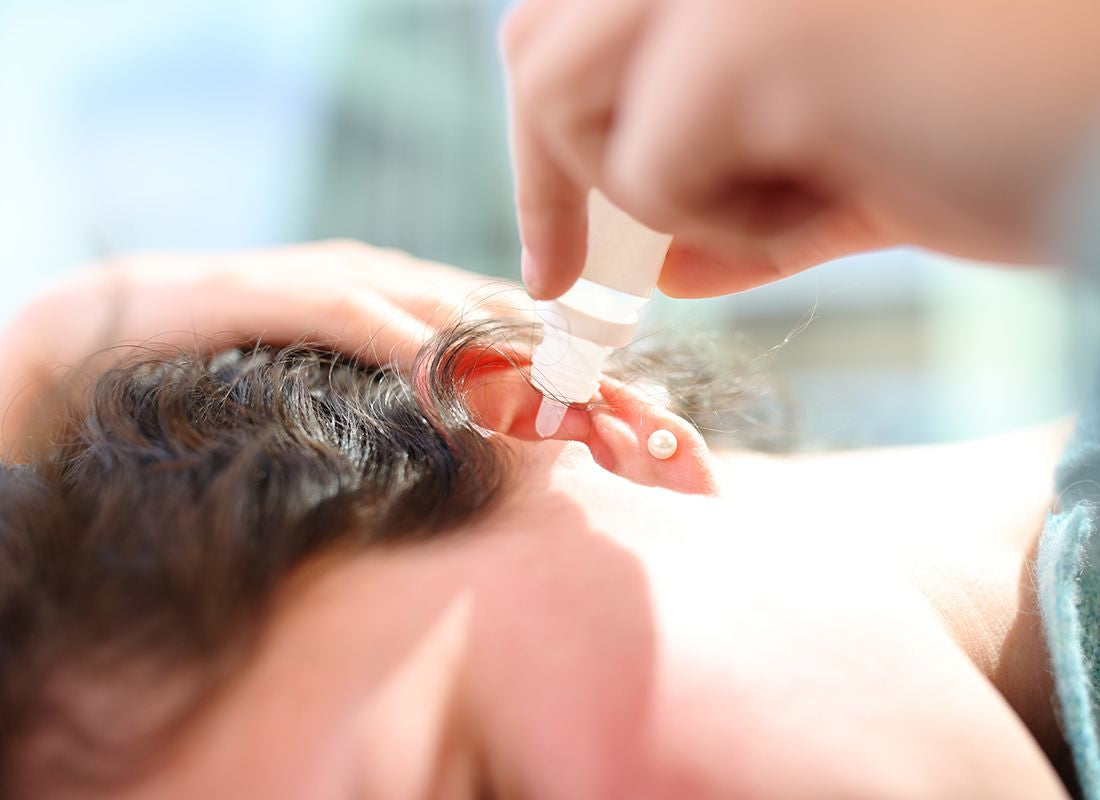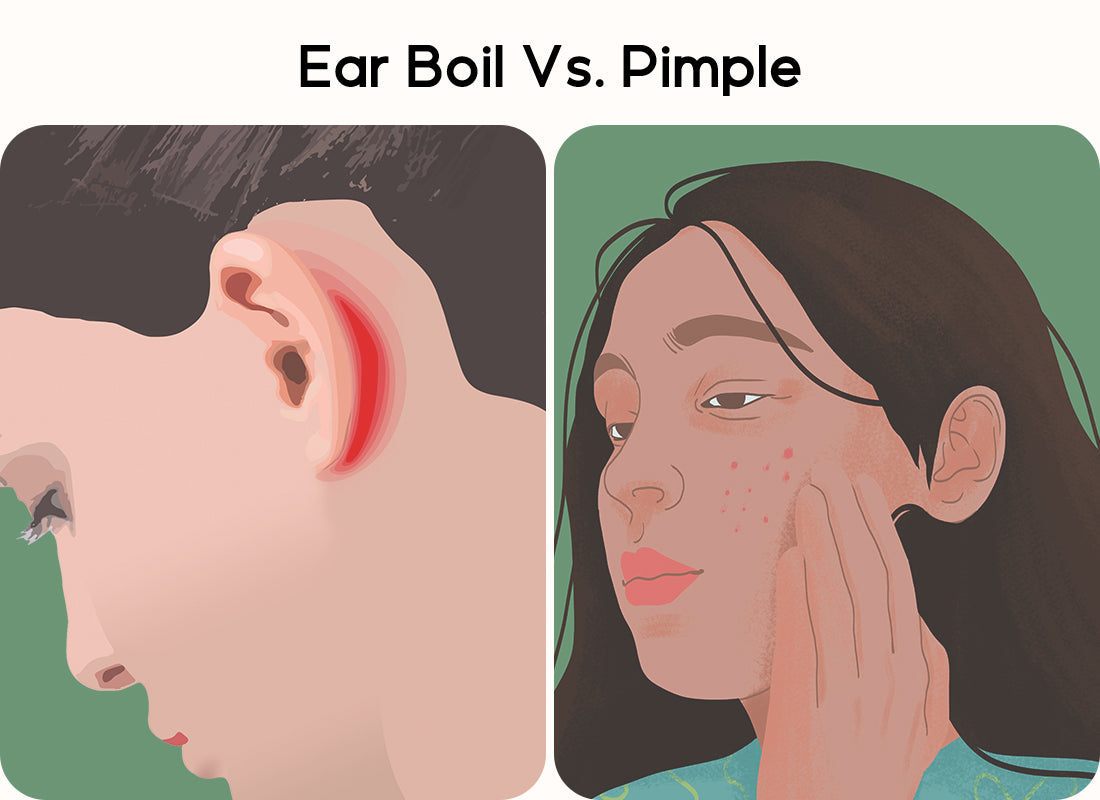Ear wax is a type of waxy substance that is secreted naturally in our ear canals. Its presence, in usual cases, is normal, healthy, and even necessary for your ear. It helps keep the inner ear moisturized, while also blocking foreign materials from entering the ear canal. However, the buildup wax can sometimes reach a level that becomes truly uncomfortable and can even impair your hearing ability. In cases like these, wax removal from your ear is the only solution.
There are numerous ear wax drainage products that you can buy easily at a pharmacy. Moreover, you can also do a few simple home remedies to clean the ear canals of the extra wax. This article shows you how to remove ear wax blockage fast with water.
How to remove ear wax blockage fast with water?

Flushing is one of the most widely used practices which is usually defined as the forceful or strenuous use of water to remove ear wax. You can use flushing if the wax is resistant or has hardened for a long time. On the contrary, irrigation is a milder and more regulated use of water to eliminate ear wax. It is usually done for routine ear wax cleaning and it is considered to be a gentler way to remove wax.
It is recommended that you use a softening agent, such as baby oil or mineral oil, before you either of these procedures to take off the wax. In addition to this, you can also use an over-the-counter product made of oil or hydrogen peroxide to soften the wax.
METHOD 1: Flushing
The flushing method uses warm water to gradually rinse out ear wax and other debris from the ear canal. This technique is effective for patients whose ear canals are blocked or who face discomfort due to excessive ear wax.
Step-by-Step Instructions
1. Fill a bowl or a cup with warm water; it shouldn’t be too hot or cold. The perfect temperature could be between 98°F and 36°C.
2. Sit or stand with your head turned towards one of your shoulders so the ear you want to clean is pointing up.
3. Gently pull the outer ear away from the ear canal to straighten the canal and clear the path for the water.
4. Have an ear syringe ready (can be bought at a drugstore or pharmacy). Firmly, but gently, get the tip of the syringe to the ear canal. Bring the syringe tip to the ear wall so it does not aim straight into the eardrum.
5. Gradually pour a small quantity of warm water into the ear canal. You may hear quiet gurgling or bubbling sounds as the water moves in.
6. Let the water flow out of the ear canal to remove the ear wax or other materials within the ear canal.
7. In case you still have ear wax or discomfort, repeat the same way in the same ear or the other one if required.
8. Once done, remember to use a washcloth or a small towel to softly dab the outer ear dry and avoid bacteria growth.
METHOD 2: Irrigation
Ear irrigation is an ear wax cleaning method that helps clear wax that might stuck in the ear canal regularly. It is commonly used for softening and removing ear wax accumulation.
Step-by-Step Instructions
1. Get an ear syringe or a bulb syringe, whichever is more convenient. Fill the syringe with warm clean water (not too hot or too cold). The ideal temperature should be about 98°F (36°C). Make sure to get rid of all air bubbles.
2. Standing or sitting, putting your head tilted to the side with the ear you need to clean facing upwards.
3. Gently pull the outer ear upwards and back, using the thumb and the index finger. This lets you straighten up the outer ear canal, offering you better access to the inner ear.
4. Carefully insert the tip of the syringe into the ear canal, directing it towards the eardrum. Do not push the syringe too deep, as this may be painful or may even damage the eardrum.
5. Slowly squirt to direct a steady stream of water into the ear canal. Make sure to target ear wax and not eardrum. You may experience a slight pressure or a feeling as the water is flowing in.
6. Allow the water to flow out of the ear canal, taking ear wax with it. You might hear a soft gurgling sound as water flows out.
7. Dry the outer ear and the ear canal with a towel. Pat gently to dry the part careful not to rub or scrub hard.
Important Notes
- Do not use cold or hot water because it could cause pain or even damage the ear drum.
- Use an ear syringe with a soft rubber tip to reduce the chance of hurting the ear canal.
- Do not put the syringe into the ear canal too deep because the ear wax can be pushed further in or the eardrum can be ruptured.
- Should you feel any pain, or discomfort, or have any trouble in hearing after you are finished with flushing or irrigation, you should at once see a healthcare professional or an ear specialist.
- If you have any ear problems like a perforated eardrum or ear infection, or you just can't understand these methods, it is better for you to consult a healthcare professional for help.
Post-removal care and Follow-Up
The best way to avoid ear wax accumulation is to restrain yourself from excessive cleaning. Overcleaning causes a higher risk of a clogged ear in the future. Therefore, if you are not particularly disturbed by that ear wax, do not interfere with a natural process of your body.
Moreover, don't push any foreign articles into the ear like cotton swabs, hair pins, or ear candles. These can be even more dangerous to the ear than the ear wax, and they can also aggravate the problem by pushing the wax deeper into the canal.
Alternative Methods and When to Seek Professional Help
If you do not feel comfortable with using either of the mentioned procedures, you can opt for camera-equipped ear wax removal kits. These kits are made to perform easy at-home removal of ear wax with a guarantee of safety.
The set usually includes a small camera (otoscope) that lets you see the eardrum and canal itself, a syringe or irrigator to clear out the wax in your ear, and paper towels or a basin to catch the wax. The camera leads you to aim the ear wax precisely, thus preventing any damage to the ear canal or eardrum.
Bebird Note5 Pro Ear Camera Cleaner is a game changer for those who are dealing with the problem of wax in their ears and seek real-time advice from health professionals. The device allows you to clean your ear of any ear wax blockage and is best for families with kids or aged people who want to cut the cost of health care.
Bebird high-end-3-in-1 audiovisual smart ear cleaner is an amazingly advanced product with numerous built-in functionalities. Equipped with a 10-megapixel micro camera, the device gives you images that are almost on the same level as medical-grade otoscopes.
Furthermore, the tool comes with a high-quality Manual-Arm tweezer that, has an ergonomic design and was engineered with precision, so it can be used in even the most difficult situations. Additionally, the Bebird ear cleaner comes with an Internet of Things (IoT) feature that allows users to have face-to-face online diagnoses with healthcare providers - a novelty in IoT-enabled otoscopes.
Conclusion
You may think of it as something disgusting, but ear wax is a natural body secretion and actually vital for your body. This wax is useful in maintaining your hearing ability and aids in the prevention of multiple ear-related issues.
Nevertheless, the overproduction of the ear wax can cause pain and discomfort and, thus, may cause hearing loss. This article helps you learn how to remove ear wax blockage fast with water. You can either decide to do the flushing or irrigation yourself or you can have a doctor do it for you.

















Leave a comment
All comments are moderated before being published.
This site is protected by hCaptcha and the hCaptcha Privacy Policy and Terms of Service apply.